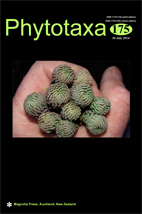Abstract
Five asexually reproducing basidiomycetous fungi, isolated from northern and southern provinces of Thailand, characterized by slimy, setulate conidia in creamy white pycnidia and classified in the genus Chaetospermum, are studied in detail. Two species, C. camelliae and C. artocarpi, are redescribed and epitypified. A phylogenetic tree based on 28S large subunit rDNA (LSU) sequence was used to analyze their taxonomy and relationships. The study confirmed that Chaetospermum belongs to the Sebacinales, a poorly studied order of Agaricomycetes.

